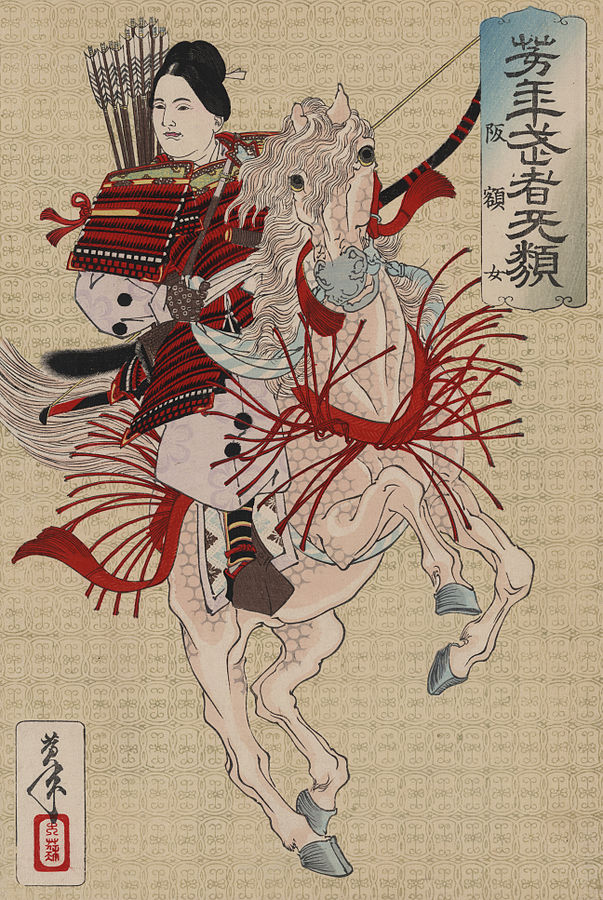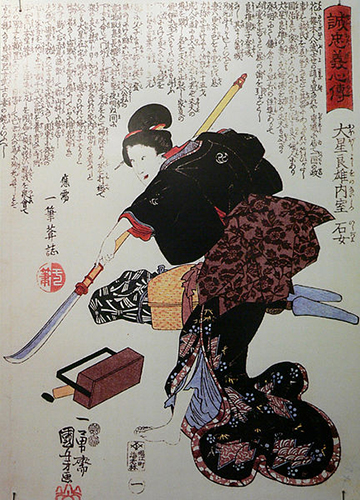
Heroic Women of the Samurai Class
A Japanese woman’s presence in feudal society was discreet, yet essential to smooth sailing of day to day concerns at the palace or council chambers. The women of the samurai class had a great influence over the political process, and they played a vital part during the Sengoku period of Japan.
Female women warriors of the Japanese upper class are known as onna-bugeisha (女武芸者). Many of them were widows, wives, daughters, and even rebel women who engaged in battle beside samurai men. Onna-bugeisha were members of the bushi (samurai) class in feudal Japan who were trained to use weapons to protect their, honor, family, and household from enemies.
Onna bugeisha Ishi-jo, wife of Oboshi Yoshio (one of the 47 ronin) | Utagawa Kuniyoshi (1798 – 1861)
Even before the emergence of the samurai class, women were trained to use a naginata (a wooden shaft with a curved blade on the end), kaiken (an 8-10 inch long, single or double-bladed dagger), and the art of tantojutsu (a Japanese variety of knife fighting systems). This ensured protection for Japanese communities that didn’t have enough male fighters.
In archeological evidence uncovered at the site of the Battle of Senbon Matsubaru between Takeda Katsuyori and Hojo Ujinao in 1580, DNA tests on 105 remains found that 35 of them were female. It was concluded that samurai women warriors fought in armies, although their involvement was hardly ever recorded.
“Hangakujo”. The female warrior samurai Hangaku Gozen by Yoshitoshi (1839-1892).
There are very few stories about samurai women warriors compared to male warriors, but female samurai warriors were nonetheless found in warships and battlefields through the course of history. Female involvement in warfare is generally more defensive than offensive. There are no records of women being recruited to serve in armies, nor were they ordered to fight. Samurai women warriors came from different family backgrounds ranging from peasants to noblewomen. They were motivated to fight for their political beliefs, religion, or revenge. They fought willingly to their deaths as the ultimate sacrifice for their cause. A samurai woman warrior’s involvement in conflict was indirect yet considerable as shown by the battles and exploits that remain to be some of the greatest in samurai history.

